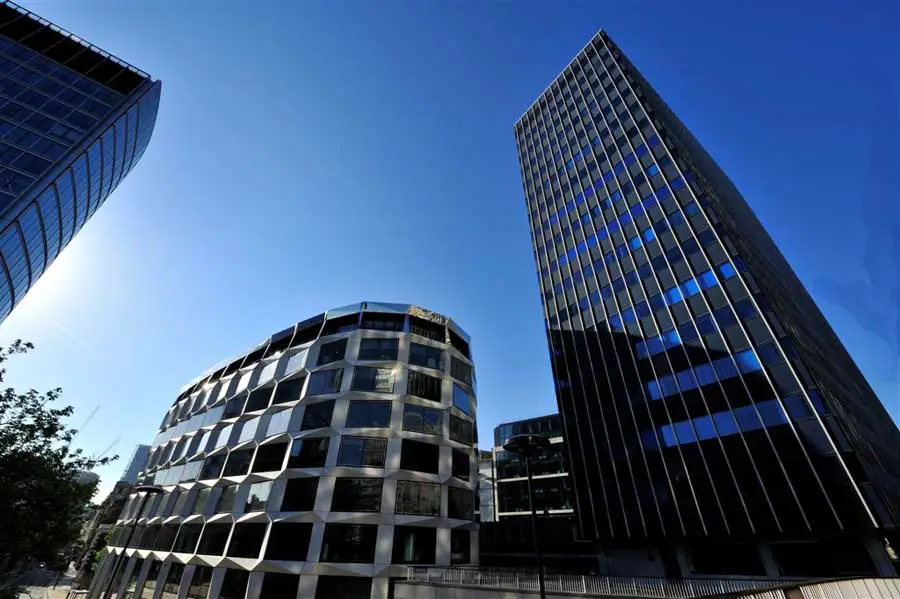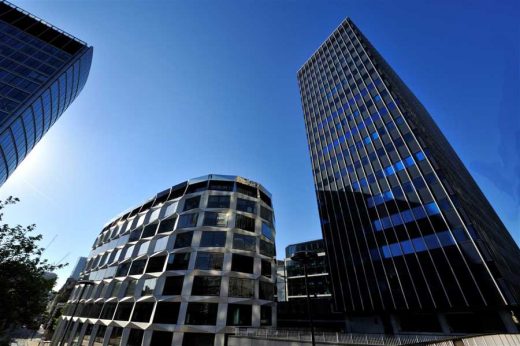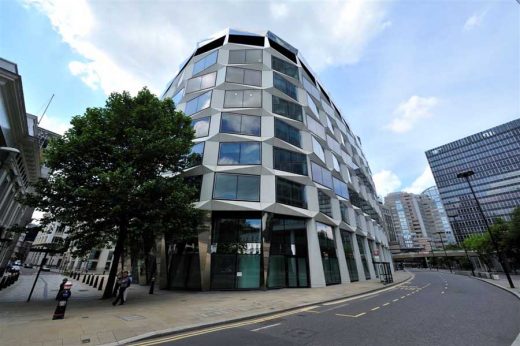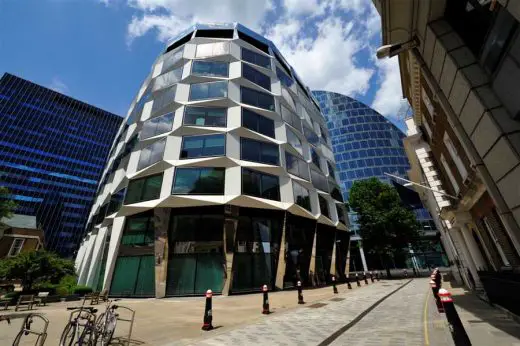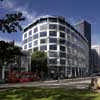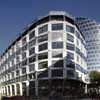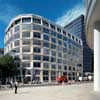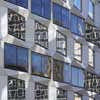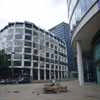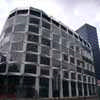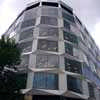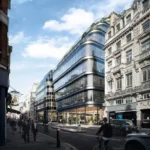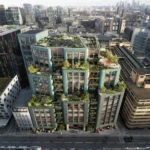Moorgate Building, EC2 Offices Images, Coleman St Property, City HQ News
Moorgate Offices Building
1 Coleman Street, EC2 for Stanhope, London design by David Walker Architects + Swanke Hayden Connell
post updated 18 May 2021 ; 9 Jun 2009
Moorgate Office Building
Location: 1 Coleman Street, London, England, UK
Date built: 2007
Design: David Walker Architects + Swanke Hayden Connell
One Coleman Street – Moorgate building : Photos + text below from Stanhope
Headquarters building
1 Coleman Street is an oval nine storey building occupying a rare island site in the City, close to the Guildhall.
Despite the constraints of the St Paul’s Heights Code, the site has nevertheless produced 180,000 sq ft of space. Stanhope has developed the building to shell and core for Legal & General, who will undertake the fit-out and move its headquarters and 800 staff there. One floor will be sub-let.
Site challenges
Ground conditions were complex. The site provided access to a City of London basement car park, and this entrance had therefore to be moved further along London Wall. A Post Office rail tunnel also runs diagonally under the site, and at the start of construction a large number of fibre-optic services passing under the site had to be moved. Secant piling was used to create the basement.
The project was innovative in its use of a twin wall system for core construction, which produced benefits in terms of speed, safety and a reduction in formwork. Erection of the steel frame started in March 2006, with shell and core construction was completed in February 2007.
One Coleman Street – Building Information
Title: 1 Coleman Street
Owner: Union Investment Real Estate AG
Partner: British Land
Building Type: Office
Developer / development manager: Stanhope
Architects: David Walker Architects + Swanke Hayden Connell
Structural Engineer: Arup
Services Engineer: Arup
Cost Consultants: Davis Langdon + Mott Green & Wall (M&E)
Construction Manager: Bovis Lend Lease
NIA: 180,000 sq ft
Contract Start / finish date: Jan 05 – PC Feb 07
Pre-let: Legal & General
Photos © Adrian Welch, Jun 2007:
Winner of Concrete Centre Award for Sustainability 2007
1 Coleman Street – Sustainable Materials
Coleman Street makes extensive use of recycled and secondary concrete materials. The façade combines glazing and polished concrete in a ratio of 60 : 40%, and the precast elements use 100% secondary coarse aggregate.
The basement and upper floor slabs used 100% secondary course aggregate in the form of china clay stent. Stent is waste granite material that has been separated from china clay as a by-product. Every tonne of china clay generates around 4.5 tonnes of stent, which is usually tipped on spoil heaps. The use of 6,000 tonnes of stent at Coleman Street meant an equivalent saving in spoil generated, and 6,000 fewer tonnes of primary aggregates quarried.
The stent was transported by rail to the London mixing plant, where it was incorporated into the concrete.
The project also used pulverised fuel ash (PFA) to replace a proportion of Portland cement. In some elements of the structure, this was increased to around 40%, as opposed to the more usual 30%. Reinforcement was manufactured from 100% scrap metal. With this approach, the overall recycled/secondary content of the concrete increased tenfold, from the 5% level (by mass) typical of current construction to 50%.
1 Coleman Street – Partners in innovation
The innovative approach to the concrete mix was supported by a full programme of consultation and testing undertaken by Stanhope and its supply team. The success of the project will lead to further use of the material.
The façade design has produced office spaces with ample natural light and the project meets all the requirements of the current Part L regulations, even though consent was given in 2004. The objective is a ‘Very Good’ BREEAM rating, which is optimal for shell and core.
One Coleman Street
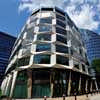
image © Nick Weall
Moor House
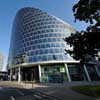
image © Nick Weall
Location: Moorgate, London, England, UK
London Buildings
Contemporary London Architecture
London Architecture Designs – chronological list
Architecture Tours in London by e-architect
Moorgate was a postern in the London Wall originally built by the Romans. It was turned into a gate in the 15th century.
Moorgate London – wikipedia page
Girdlers Hall, Bassinghall Avenue
Moorgate offices London: building photographs taken with Panasonic DMC-FX01 lumix camera; Leica lense: 2816×2112 pixels – original photos available upon request: info(at)e-architect.com
60-70 St Mary Axe
Design: Foggo Associates Architects
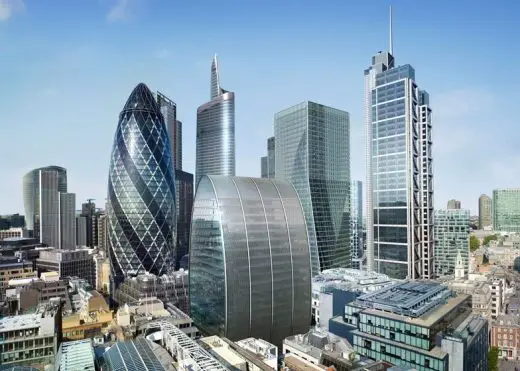
image courtesy of the architects
60-70 St Mary Axe Building
Design: Kohn Pederson Fox – KPF
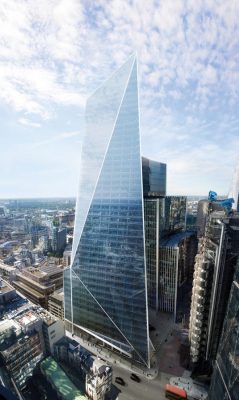
image courtesy of the architects
The Scalpel City of London Skyscraper
Comments / photos for the Moorgate Building London – 1 Coleman Street design by David Walker Architects + Swanke Hayden Connell page welcome

